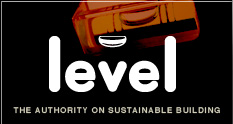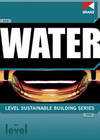Water
Water use, sustainability, and efficiency by choosing quality systems and materials, and providing environmentally friendly solutions.
Water
By designing to minimise water use and making good materials choices, you can lower household running costs, cut demand on community infrastructure and reduce greenhouse gas emissions.
For water supply and drainage, the first consideration is building users’ health and safety. A system is not sustainable if it does not meet basic needs for drinkable water and for safe disposal of waste.
In September 2021, the Minister for Local Government said that each year in New Zealand around 34,000 people become ill from their drinking water and many thousands of households in different regions must boil their water to drink it safely.
On 21 November 2021, Taumata Arowai became the new independent water services regulator for Aotearoa New Zealand, taking over from the Ministry of Health.
New Drinking Water Standards came into effect on 14 November 2022. New aesthetic values for drinking water also came into effect on 14 November 2022. As well as being safe, drinking water also needs to taste and smell acceptable.
For water supply in housing, there are many things for the designer to consider, ranging from the type and location of the of water heating system used to the layout of pipework to specifying appliances and fixtures. These decisions can have a significant impact on water and energy use over the life of a building.
For wastewater treatment, the key decision is whether to connect to the mains sewerage network, treat wastewater on-site, or a combination of both. Either way, it is important that health and safety requirements are met.
Stormwater runoff places demand on infrastructure and can carry contaminants into waterways such as streams and the sea.
All water and wastewater costs are borne by building owners and occupiers, through rates and user charges. By designing, building and renovating homes that use water efficiently, you can help keep these costs down.
Incorporating water saving devices in a house can also result in it achieving a much higher score in rating tools such as Homestar. This gives homeowners an independent measure of their home’s efficiency and sustainability – and can be a useful marketing tool if and when they choose to sell.
Reducing water use also benefits the environment by:
- reducing the need to draw more water from rivers and other waterways
- reducing demand for energy used to collect and distribute water
- reducing the need to build new infrastructure for water supply and wastewater disposal
- reducing the carbon emissions that the water system accounts for, thus helping New Zealand move toward its 2050 net-zero carbon goal.
The key plumbing standard is AS/NZS 3500 Plumbing and Drainage, which has four parts that cover water services, sanitary plumbing and drainage, stormwater drainage and heated water services.
The 2021 versions of the different parts of AS/NZS 3500 are the ones now used for demonstrating compliance with the Building Code. MBIE cited the 2021 edition of the standard in Acceptable Solutions in November 2023 with a 12-month transition period ending in November 2024. For water supply there is a new Acceptable Solution, G12/AS3.
BRANZ has more research-based guidance about water management in the online resource Up-Spec.
Updated: 02 November 2023
-
Water supplyWater use, sustainability, and efficiency by choosing quality systems and materials, and providing environmentally friendly solutions.


